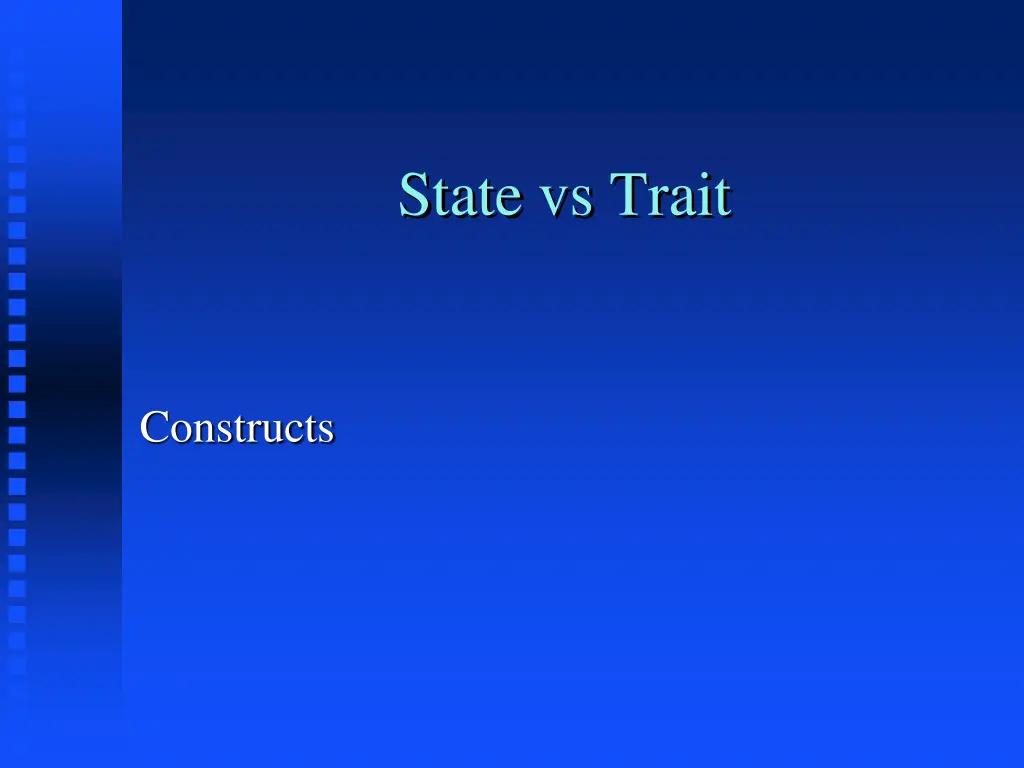
Understanding Psychological Measurement Principles
Explore key concepts like state vs. trait constructs, criterion vs. norm-referenced assessments, types of norms, sampling methods, correlations, and appropriate correlation techniques in psychological measurement.
Download Presentation

Please find below an Image/Link to download the presentation.
The content on the website is provided AS IS for your information and personal use only. It may not be sold, licensed, or shared on other websites without obtaining consent from the author. If you encounter any issues during the download, it is possible that the publisher has removed the file from their server.
You are allowed to download the files provided on this website for personal or commercial use, subject to the condition that they are used lawfully. All files are the property of their respective owners.
The content on the website is provided AS IS for your information and personal use only. It may not be sold, licensed, or shared on other websites without obtaining consent from the author.
E N D
Presentation Transcript
State vs Trait Constructs
Project question 4 Does your test measure a state or a trait?
Criterion vs Norm referenced Criterion reference = compares to established standard, well defined objectives Norm referenced = compares each score to other scores, relative
Norms Types of norms?????
Project question 5 What sort of norms would be appropriate to collect to standardize your measure? Why did you select those norms?
Sampling Random Stratified Purposive Incidental/convenience
Correlations NOT causal relationship between variables predictive
Correlation values -1 to +1 .56, -.45, -.09, .89, -.93
IE/AB correlation 16 14 12 10 8 AB 6 4 2 0 0 5 10 15 20 correlation for AB/IE = -0.11
Appropriate Correlations 1 - data must be linear not curvilinear (determine by scatterplot)
Appropriate Correlation to use 1 linear data 2 - type of scale interval (or ratio) = Pearson r ordinal = Spearman rho 3 - number of subjects more than 30 = Pearson fewer than 30 = Spearman
Decision Tree Linear No = no corr yes = corr Scale ordinal = rho interval = r number < 30 = rho > 30 = r
Project question #6 Which correlation formula would you use when correlating the scores from your measure with another variable? Why would you use that formula?
Multiple correlations Correlations between more than one variable done at the same time.
Multiple regression Relationship between more variables Uses specific predictor and criterion variables Looks at relationships between predictors Can factor out partial relationships
Multiple regression - example Grad school grade performance = criterion (or outcome) Predictor variables = undergrad GPA = GRE scores = Quality of statement of purpose
Multiple regression data Predictor GPA GRE statement Beta (=r) .80 .55 .20 significance (p) .01 .05 .20
Multiple regression example 2 Predictor variables = Metacognition, Locus of Control, Learning Style Criterion variable = academic performance (grade)
Multiple regression data Predictor Meta. LofC L.S. Beta (=r) .75 .65 .32 significance (p) .01 .05 .15
